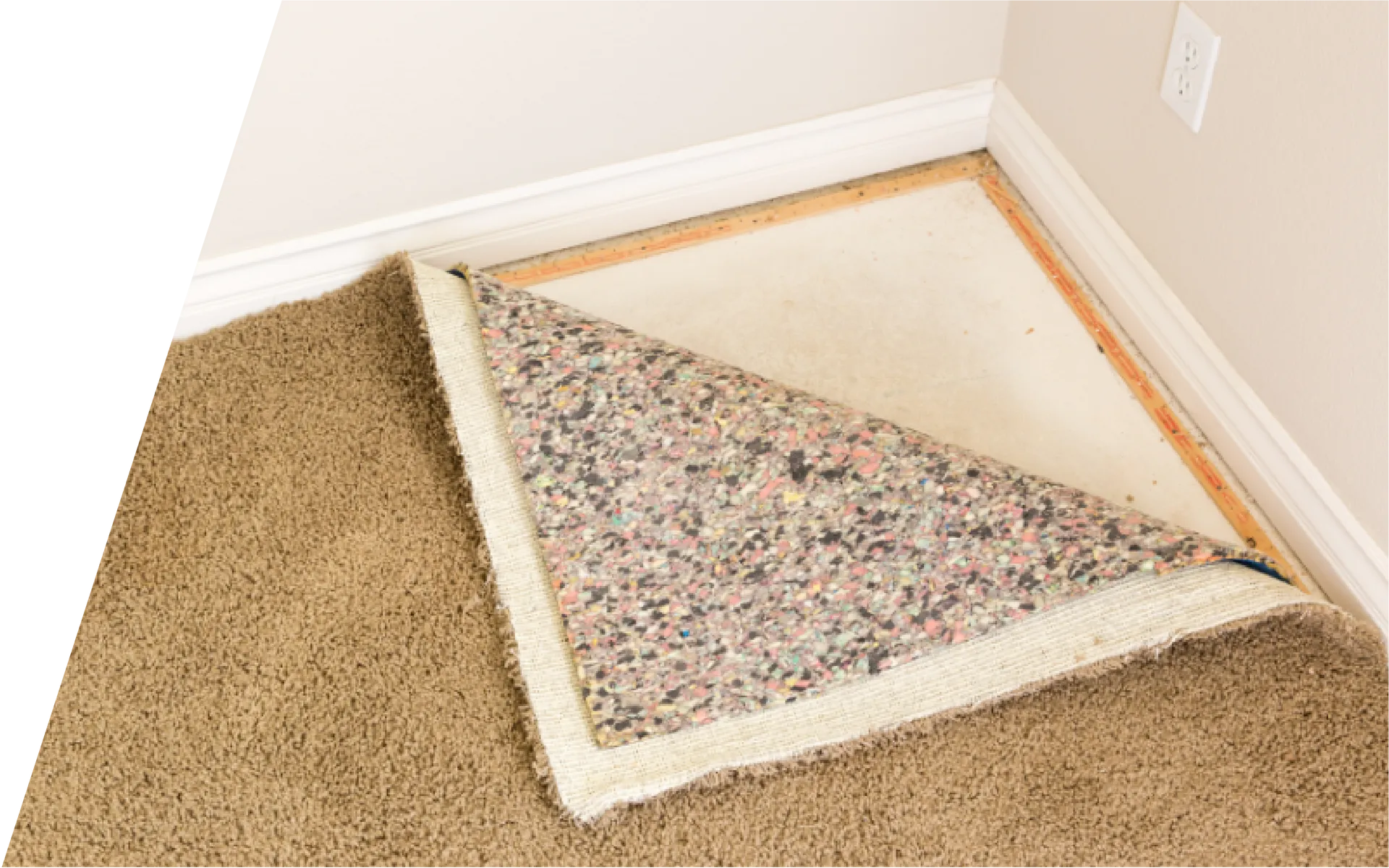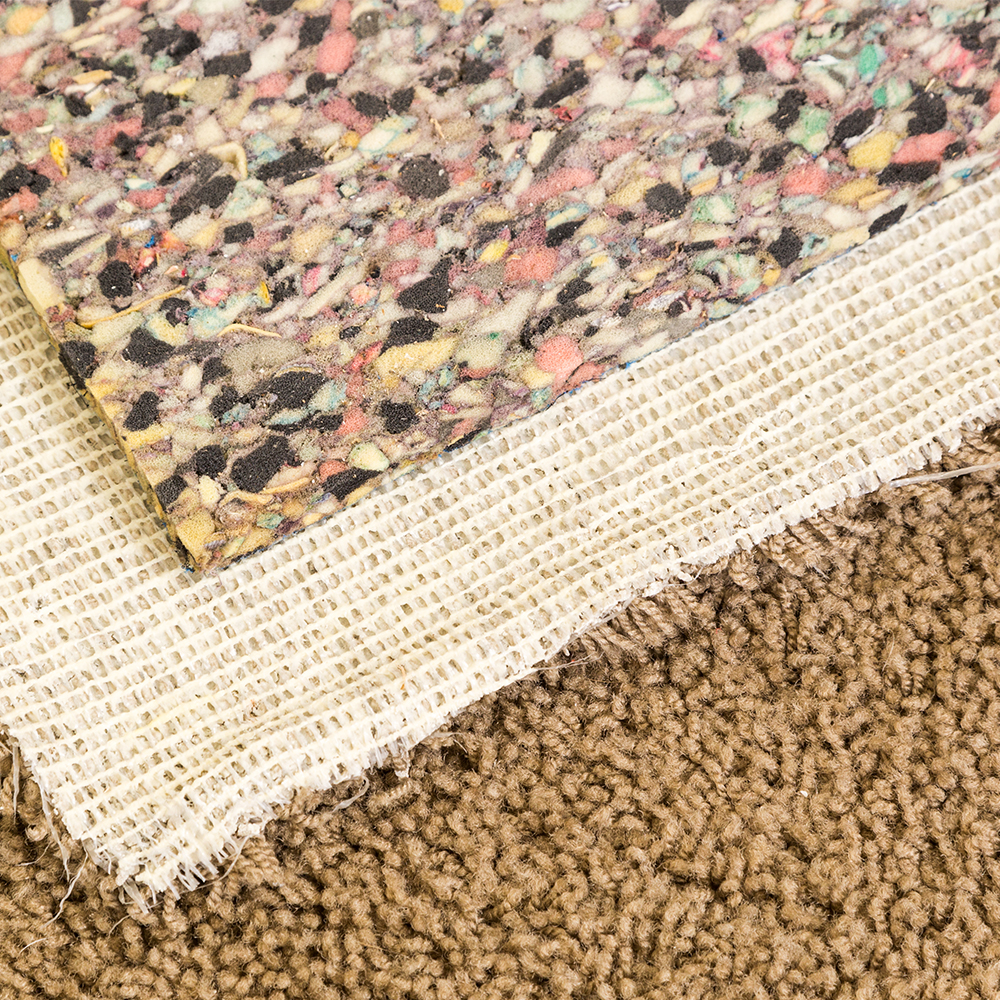- Blog
What is a Good Carpet Padding Thickness?
- By Fern Flooring Team
Introduction
Carpet padding changes how a carpet feels, how long it lasts, and how a room performs. At Fern Flooring Experts we guide homeowners, landlords, and business owners through padding choices so you get the right balance of comfort and resilience. The right padding protects carpet fibres, reduces noise, and adds insulation against cold floors. It also reduces damage from foot traffic and furniture.
Padding acts like a shock absorber. Thicker padding gives more cushion, but too thick a pad can cause premature wear and permanent ripples. Thinner padding gives a firmer feel and better support for high traffic areas. We measure your subfloor, test moisture levels, and recommend padding that matches the carpet type, the room use, and local climate conditions.
We supply, install, and maintain carpet and padding across Kampala, Entebbe, Jinja, and beyond. We work with homeowners, hotels, offices, and architects. We bring samples, perform on-site trials, and explain trade-offs in plain language.
Why padding thickness matters
Padding thickness affects comfort and the perceived quality of a carpet. A good pad softens each step and reduces joint impact in busy homes and offices. Under heavy furniture a supportive pad prevents crushing, extending carpet life. In bedrooms and lounges thicker pads improve the luxurious feel without harming the carpet when chosen correctly.
Padding also affects thermal performance and sound insulation. A dense pad with moderate thickness raises the thermal resistance of the floor, which helps bedrooms and living rooms feel warmer at night. For apartments and office suites, padding reduces footfall noise and protects neighbours below. We measure performance gains and explain payback in cost and comfort.
A mistake many people make is picking thickness without checking density and carpet construction. A 12 mm pad with low density will compress quickly. A 10 mm pad with high density often performs better long term. We choose padding based on both thickness and density to deliver predictable results for your project.
Common padding types and how they perform
Rebond foam offers good resilience and cost efficiency for residential use.
It comes in a range of densities. For family homes we often recommend medium density rebond with 8 to 10 mm thickness for living spaces, and a firmer 6 to 8 mm option for hallways and stairs.
Memory foam pads feel luxurious but compress more under heavy loads. We use memory foam sparingly for bedrooms or boutique hotel suites where comfort matters more than heavy wear.
Rubber pads provide excellent durability and noise control.
They offer lower thickness with higher performance. A 5 to 7 mm rubber pad can outperform a thicker, low density foam pad. For commercial offices, hotels, and multi storey apartments we often specify rubber or high density polyurethane.
Felt and fibre pads provide thermal benefits and long term dimensional stability.
They work well under berber and loop pile carpets. We recommend felt pads for areas where thermal insulation and minimal compression are priorities.

Recommended thickness by room and use
Bedrooms and lounges:
8 to 12 mm medium to high density padding. This balance delivers a soft feel and long life. Add an underlay with thermal properties for cooler nights.
Living rooms and family rooms:
8 to 10 mm medium density padding. These rooms see heavy use and occasional furniture movement, so higher density helps.
Hallways and stairs:
6 to 8 mm high density padding or firmer rubber. These areas need support to avoid crushing. For stairs choose low profile, high resilience pads and use proper gripper rods for safety.
Offices and commercial spaces:
5 to 8 mm high density rubber or commercial grade polyurethane. Low profile, high density pads prevent indentation from office chair casters and heavy traffic.
Retail and hospitality:
6 to 9 mm, often rubber or bonded pads with high resilience. We plan maintenance schedules and use protective treatments in high wear zones.
Installation and subfloor considerations
We inspect the subfloor for evenness and moisture before recommending padding. On concrete slabs we test moisture and fit a suitable damp proof membrane if needed. Moisture can ruin padding and adhesives, so we remediate before work begins.
We cut padding to fit and join seams tightly. We secure edges on stairs and trim transitions at thresholds. We recommend a short acclimatisation period after laying padding in closed rooms. This helps the pad recover any compression from packaging before we stretch and fit the carpet.
Warranty and performance expectations
Warranties depend on both carpet and padding manufacturers. Using an approved high quality pad often keeps manufacturer carpet warranties valid. We provide written warranty details and record the installation conditions to protect your coverage.
Expect padding to compress gradually over years. High density pads retain more performance. We offer maintenance inspections and replacement recommendations when pads reach end of useful life to avoid carpet replacement caused by underlay failure.
Practical examples from local projects
A guesthouse in Fort Portal replaced old soft pads with a 7 mm high density rubber pad beneath a loop pile carpet. The owner reported lower noise transfer to downstairs rooms and fewer complaints about sagging. A family in Kololo chose a 10 mm rebond pad for the lounge and a 6 mm high density pad for the hallway. The result felt comfortable and stood up to kids and guests.
Stamped Concrete Flooring Uganda
Polished Concrete Flooring Uganda
Artificial Grass Turf Uganda
Hardwood Flooring Uganda
Top 8 related FAQs
What thickness should I choose for a bedroom carpet to get a balance of comfort and durability?
For most bedrooms we recommend 8 to 12 mm with medium to high density. This range gives softness underfoot and protects the carpet fibres from rapid wear. A thicker pad feels plush but must have good density to avoid sagging. We bring samples and let you walk on trial areas to confirm the feel before installation.
Also consider thermal underlay properties if your bedroom sits on a concrete slab. A pad with thermal resistance makes the room feel warmer at night. We present a cost comparison showing initial expense against comfort gains and estimated lifespan.
How do I choose padding for a busy hallway and stairs to prevent crushing?
Choose a firmer, high density padding of 6 to 8 mm for hallways and stairs. These areas carry heavy point loads from footsteps and furniture movement. A low profile but high resilience pad resists compression and holds the carpet pile upright longer. For stairs use a stair-specific underlay and proper installation with gripper rods to prevent edge lifting.
We inspect the stair construction and select pad thickness to match the nose profile. We also recommend more frequent maintenance inspections because stairs show wear earlier than flat floors.
Will thicker padding always mean a softer carpet feel?
Not always. Thickness gives cushion only if the pad has sufficient density. A very thick low density pad compresses quickly and gives a spongy, unstable feel. A thinner high density pad often feels firmer and more supportive for long term use. We test pads side by side so you experience the difference and choose a combination that matches your comfort goals and traffic expectations.
We also consider carpet type because dense, low pile carpets need firmer underlays to avoid a squashed look. We match pad and carpet to deliver the intended aesthetic and performance.
Can padding improve thermal comfort and energy use in my home?
Yes. A quality padding with thermal properties increases the floor’s insulation. In bedrooms and living areas this reduces heat loss through the floor and improves perceived warmth. For ground floor slabs we may combine padding with thin thermal underlays or insulating layers below the slab to boost performance further.
We provide simple payback estimates based on local fuel and electricity prices so you see how comfort improvements relate to running costs.

How do moisture and ventilation affect padding choice on ground floors?
Moisture can degrade padding, adhesives, and carpet backings. We test slab moisture before laying padding. If readings exceed safe limits we install appropriate damp proof membranes and choose moisture tolerant pads. For raised floors we check ventilation beneath joists to prevent trapped humidity. Proper remediation avoids future mould and padding failure.
We document moisture readings in our report so you have a clear record and assurance before installation.
How long does a typical carpet pad last before replacement is needed?
A high quality, high density pad can last eight to twelve years in residential use under normal traffic. In commercial high traffic settings expect shorter life, often three to six years, depending on grade and maintenance. Early signs of replacement need include increased pile crush, visible ripples, and reduced comfort.
We offer inspection services and can replace padding independently of carpet when practical, extending the life of your carpet and saving cost.
Are there any building code or warranty rules about padding thickness I should know?
Some manufacturers specify minimum underlay requirements to keep carpet warranties valid. Building code may also influence fire performance and acoustic requirements in multi storey buildings. We check manufacturer and code requirements and specify compliant padding systems. We provide written documentation to ensure warranty and code compliance.
How do I book a site visit and reserve a team or vehicle for measurement day?
Contact our office by phone or WhatsApp with your address and preferred dates. We arrange a site visit, bring samples, and perform moisture and subfloor tests. To reserve our team and a vehicle for measurement day we ask for a small deposit. We confirm timing and logistics, then deliver a written quote after assessment.
Conclusion
A good carpet pad balances thickness with density and matches the carpet and room use. Fern Flooring Experts helps you pick the right pad, prepares the subfloor, and installs to manufacturer and code standards. We supply, install, and maintain padding and carpet across Uganda, working with homeowners, landlords, hotels, and architects.
To reserve a site visit call or WhatsApp our office with your project address and preferred date. Tell us if you need a car for measurement day and we will reserve transport when you place a small deposit. Request a Quote from Fern Flooring Experts, and we will bring samples, test your subfloor, and give a clear written recommendation.